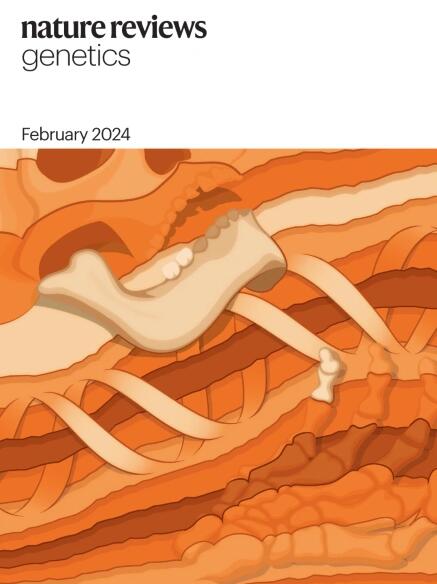转录后RNA剪接的调控与功能
IF 52
1区 生物学
Q1 GENETICS & HEREDITY
引用次数: 0
摘要
真核RNA转录物在成为功能性信使RNA之前经历了广泛的加工,剪接是一个关键和高度调控的步骤,同时发生在共转录和转录后。最近的分析显示,在前所未有的空间和时间分辨率下,高达40%的哺乳动物内含子在转录终止后被保留,随后大部分被移除,而转录本仍与染色质相关。转录后剪接已成为发育、应激反应和疾病进展过程中基因表达调控的关键层。转录后剪接的控制通过延迟剪接和核输出,或特定转录异构体的核保留和降解来调节蛋白质的产生。在这里,我们回顾了目前检测转录后剪接的方法,讨论了控制剪接时间的机制,并研究了这种时间调节如何影响健康细胞和疾病状态下的基因表达程序。本文章由计算机程序翻译,如有差异,请以英文原文为准。


The regulation and function of post-transcriptional RNA splicing
Eukaryotic RNA transcripts undergo extensive processing before becoming functional messenger RNAs, with splicing being a critical and highly regulated step that occurs both co-transcriptionally and post-transcriptionally. Recent analyses have revealed, with unprecedented spatial and temporal resolution, that up to 40% of mammalian introns are retained after transcription termination and are subsequently removed largely while transcripts remain chromatin-associated. Post-transcriptional splicing has emerged as a key layer of gene expression regulation during development, stress response and disease progression. The control of post-transcriptional splicing regulates protein production through delayed splicing and nuclear export, or nuclear retention and degradation of specific transcript isoforms. Here, we review current methodologies for detecting post-transcriptional splicing, discuss the mechanisms controlling the timing of splicing and examine how this temporal regulation affects gene expression programmes in healthy cells and in disease states. Post-transcriptional splicing has emerged as a key layer of gene expression regulation but is challenging to differentiate from co-transcriptional splicing. The authors review methodologies to detect post-transcriptional splicing, the mechanisms controlling splicing timing and how the temporal regulation of splicing affects gene expression.
求助全文
通过发布文献求助,成功后即可免费获取论文全文。
去求助
来源期刊

Nature Reviews Genetics
生物-遗传学
CiteScore
57.40
自引率
0.50%
发文量
113
审稿时长
6-12 weeks
期刊介绍:
At Nature Reviews Genetics, our goal is to be the leading source of reviews and commentaries for the scientific communities we serve. We are dedicated to publishing authoritative articles that are easily accessible to our readers. We believe in enhancing our articles with clear and understandable figures, tables, and other display items. Our aim is to provide an unparalleled service to authors, referees, and readers, and we are committed to maximizing the usefulness and impact of each article we publish.
Within our journal, we publish a range of content including Research Highlights, Comments, Reviews, and Perspectives that are relevant to geneticists and genomicists. With our broad scope, we ensure that the articles we publish reach the widest possible audience.
As part of the Nature Reviews portfolio of journals, we strive to uphold the high standards and reputation associated with this esteemed collection of publications.
 求助内容:
求助内容: 应助结果提醒方式:
应助结果提醒方式:


